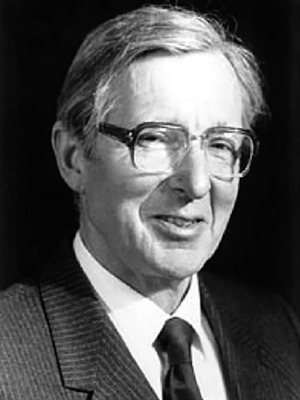 Aubrey Leatham’s career in cardiology began when he joined Sir John Parkinson as junior registrar at the National Heart Hospital in 1945. Under Parkinson’s supervision, Leatham’s interest in auscultation, the art of listening to the heart through a stethoscope, first developed.
Aubrey Leatham’s career in cardiology began when he joined Sir John Parkinson as junior registrar at the National Heart Hospital in 1945. Under Parkinson’s supervision, Leatham’s interest in auscultation, the art of listening to the heart through a stethoscope, first developed.
Up to that point, listening to the heart had been a fairly inexact science but Leatham was determined to change that and set about devising new apparatus involving sound filters and multiple microphones to record heart sounds and murmurs. His seminal work in this area contributed to a revolution in the diagnosis of heart conditions. In 1958 he published an article in the Lancet, “Auscultation of the heart”, which set out new classifications of murmur analysis and remains relevant to this day.
Cardiac medicine flourishes
In 1951 Leatham joined the eminent Australian cardiologist Paul Wood as assistant director of the Institute of Cardiology. Together they attracted an outstanding team of cardiologists, making London a world-renowned centre for the burgeoning speciality of cardiac medicine. Wood encouraged Leatham to take up a new post as head of cardiology at St George’s in 1954, at a time when cardiology was rarely a department in its own right, more often being incorporated into general medicine.
Leatham set about establishing a multi-disciplinary team and cardiac medicine flourished at St George’s during his thirty-year tenure with the department, training many future eminent specialists. A key appointment was that of John Parker, who joined St George’s in 1975 from the National Heart Hospital as a cardiothoracic surgeon.
Two of Leatham’s greatest achievements were the invention of a modified stethoscope that became clinicians’ favourite for many years and the invention of the first endocardial cardiac pacemaker. Leatham’s stethoscope, devised in 1958, was a vast improvement on other devices available at the time. He adapted the bell chest piece on the stethoscope to improve acoustic efficiency and shortened the length of the tubing to enable better conduction of sound.
Life-saving pacemakers
During the mid to late fifties Leatham worked with his technician, Geoffrey Davies, on a prototype cardiac pacemaker. Their initial efforts required relatively high voltages which caused painful contractions of the patient’s chest wall muscles. Leatham and Davies overcame this problem by creating a smaller device that could be inserted directly into the wall of the heart, so that a much safer and more comfortable voltage could be used to stimulate the organ. Other pacemaker devices were developed in the US and Sweden but it was in 1961, working with Harold Siddons and O’Neal Humphries, that Leatham implanted the first UK ‘indwelling’ pacemaker into the heart of a 65-year-old man who had suffered repeated heart attacks. Within five years, Leatham’s team had successfully treated around 1,000 patients.